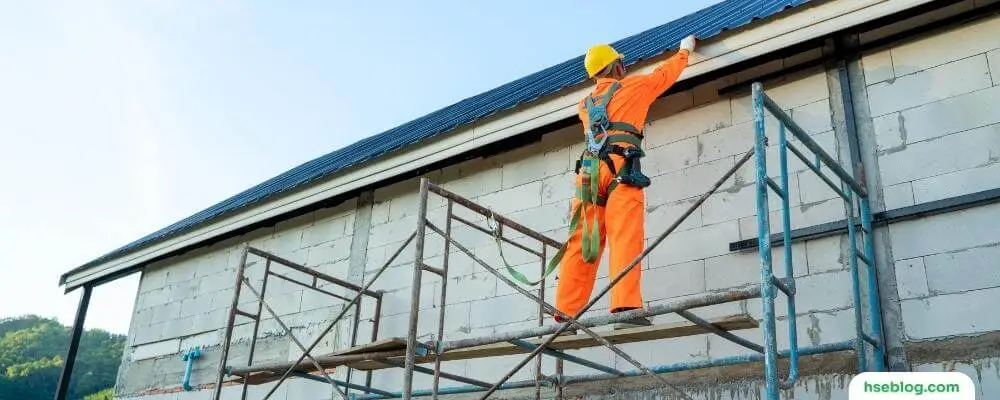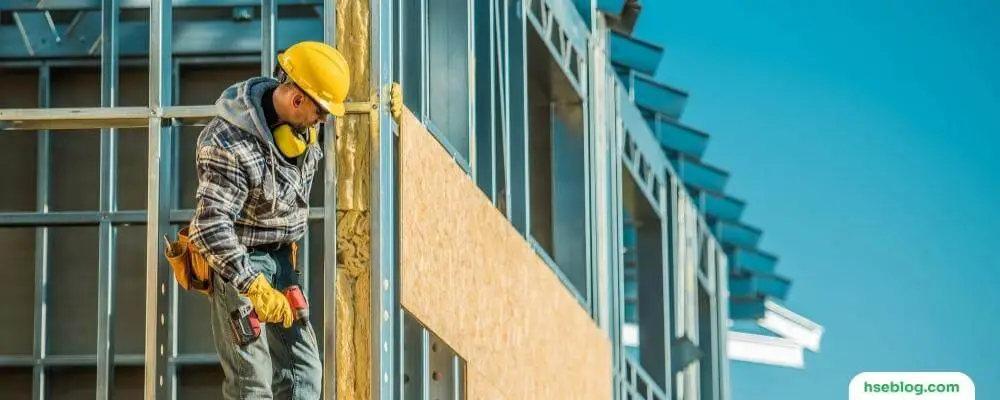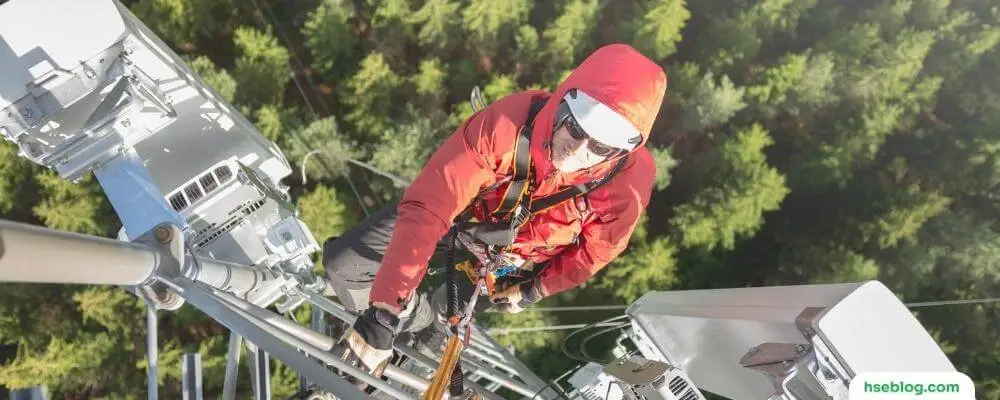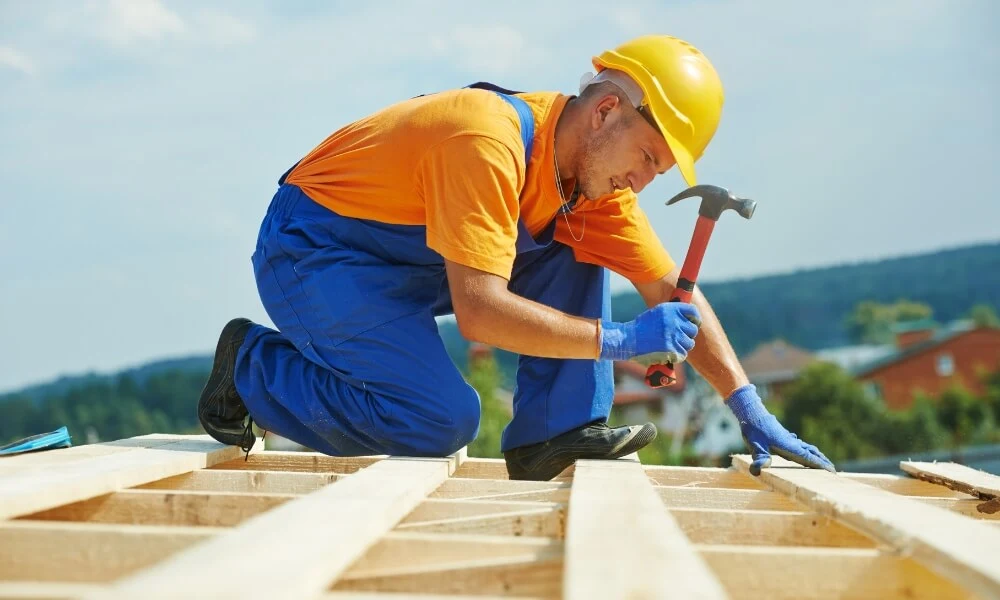Working at height is integral to the job in various industries and occupations. Whether it’s construction, maintenance, or even certain recreational activities, tasks performed at elevated levels come with challenges and safety considerations. Understanding the different working-at-height examples is crucial for employers and employees to ensure the well-being and productivity of workers.
Working at height involves carrying out tasks in an elevated position with a risk of falling and potential injury. It requires careful planning, adequate training, and appropriate safety measures to prevent accidents and protect the individuals involved. From towering skyscrapers to electricity pylons, working at height can occur in various settings, each with unique risks and precautions.
This blog post will explore ten different working-at-height examples that professionals and enthusiasts should know. We will delve into various industries and scenarios where individuals operate at elevated levels, shedding light on the specific challenges and safety measures associated with each situation.
By understanding these examples, you will gain valuable insights into the importance of safety protocols and the precautions necessary to minimize risks when working at height. Whether you are an employer responsible for the well-being of your workers or an individual preparing for a job that involves working at heights, this blog will provide you with the essential knowledge to ensure a safe and successful experience.

10 Different Working at Height Examples
Working at heights can involve various activities, each with unique risks and safety requirements. Here are ten examples:
1. Roof Work
Roof work involves various activities such as repair, installation, inspection, and cleaning. It is inherently risky due to the elevated work environment, with hazards ranging from falling from a height to tripping over equipment. Also, weather conditions play a crucial role in roof work. Rain, snow, wind, or intense sunlight can affect the safety and efficiency of the work. Personal protective equipment (PPE) like safety harnesses, sturdy boots, helmets, and scaffolding are used to mitigate these risks.
Furthermore, it’s essential to establish safe roof access and egress to prevent falls. Pre-work safety inspections should be undertaken to detect potential dangers, such as weak roofing materials or skylights. Safe work procedures, including fall protection and rescue plans, must be in place and communicated effectively to all workers. Periodic training is crucial to ensure workers know the latest safety practices and equipment.
2. Ladder Work
Using a ladder is one of the most common activities that involves working at height. However, it can become extremely hazardous if not done properly. Ladder work may include activities like painting, cleaning, or maintenance work.
Using the correct type of ladder for the specific task is essential, and the ladder should always be inspected for any defects before use. Workers should maintain three contact points while climbing a ladder to ensure balance. Moreover, the ladder should always be placed on a stable and level surface to avoid tipping. It is also important to avoid overreaching or carrying heavy loads while on a ladder to prevent falls. The use of safety belts and fall arrest systems can offer additional safety for tasks that require prolonged work on ladders.
3. Window Cleaning
This task often requires individuals to work at heights, especially in multi-story buildings. The risks involved include falling from a height, dropping objects, and swinging into obstacles if not adequately secured.
Proper safety procedures are paramount in such scenarios. This can include using appropriate safety harnesses and tethering tools, using a safe and well-maintained cradle system for access, or employing reach and wash systems that can allow cleaning from the ground level. The cleaning tools should be secured to prevent them from falling and causing injury to people below. Weather conditions must also be considered as they can make surfaces slippery, posing an additional risk.

4. Construction Work
Working at height is an integral part of construction projects, whether it’s building skyscrapers, bridges, or residential homes. This work involves numerous activities like laying bricks, fitting windows, plastering walls, installing beams, and more.
The primary hazards in construction work at height include falling from the edge, through fragile surfaces, and falling objects. Therefore, risk assessments must be performed to evaluate potential hazards. The use of safety measures like guardrails, toe boards, safety nets, and fall arrest systems can help prevent accidents. Workers must be trained in using these safety systems and recognizing potential dangers.
5. Scaffolding
Scaffolding provides a temporary, stable work platform when working at height. It’s commonly used in construction, renovation, and maintenance activities. However, if not properly installed or used, scaffolding can pose significant risks.
Properly erecting and dismantling scaffolding requires a competent person who understands the risks and how to mitigate them. Regular inspections should be carried out to ensure its stability and safety, and any necessary repairs should be performed immediately. Workers must be trained on the correct use of scaffolding, including not overloading it, maintaining good housekeeping to prevent tripping hazards, and using personal fall protection systems.
6. Tree Surgery
Tree surgery often involves working at height, using equipment like chainsaws and wood chippers. This job carries risks such as falling from a tree, struck by falling branches, or injured by equipment.
Proper training in climbing techniques and equipment use is essential, along with using the appropriate PPE, including helmets, safety glasses, gloves, and chainsaw-resistant clothing. A ground team should be in place to monitor the work and manage the drop zone. A rescue plan should be prepared in advance in case of emergencies.
7. Wind Turbine Maintenance
Working on wind turbines is a necessary task that involves working at significant heights. It can include tasks like blade inspection, gearbox repairs, and general maintenance work.
Due to the height and remote location of turbines, fall protection is crucial. This could include full-body harnesses, self-retracting lifelines, and guardrails. Regular training on safety procedures, rescue plans, and first aid can help mitigate risks. Weather conditions should be carefully considered as wind and rain can make the work much more hazardous.
8. Bridge Inspection and Repair
This involves workers operating at potentially dangerous heights, often over water or traffic. Risk factors include falling from a height, objects, and challenging rescue scenarios.
Safety measures should include robust fall protection systems, good communication systems, and regular equipment inspections. Due to the often complex nature of rescues in these situations, detailed and practiced rescue plans are vital. Using aerial work platforms or under-bridge inspection vehicles can provide safe and efficient access to work areas.

9. Crane Operations
Crane operators often work at great heights when handling heavy loads. The risks can include falls, dropped loads, and equipment failure.
A crane operator needs specific training and certification due to the high-risk nature of the work. If needed, a safety harness should be used when climbing the crane cab and during operation. Regular inspections and maintenance of the crane and associated equipment can help prevent mechanical failures.
10. Aerial Work Platform (AWP) Operations
AWPs, such as scissor lifts and boom lifts, are commonly used for tasks like maintenance work, painting, and warehouse operations. Workers operating AWPs risk falling, especially if the platform is struck by another vehicle or if the AWP tips over.
Operators need proper training in using AWPs safely, including understanding their load limits, working on sloping ground, and avoiding overhead hazards like power lines. A harness should always be worn and attached to the platform when the AWP is raised. Furthermore, regular equipment inspections and maintenance can help prevent accidents.
Additional Working at Height Examples.
Follow are the examples of working at height while:
- Using an aerial lift.
- Using a boom lift.
- Using a cherry picker.
- Using a scissor lift.
- Using a man lift.
- Painting or repairing a building.
- Cleaning windows.
- Washing a vehicle.
- Power washing a building.
- Using a power washer from an aerial lift.
- Installing gutters or downspouts.
- Installing solar panels on a roof.
- Doing masonry work on a tall building.
- Using a crane to move heavy objects.
- Using a boom truck to move large objects.
- Using an aerial lift to trim trees.
Conclusion
Understanding the ten different working-at-height examples is crucial for maintaining safety and minimizing risks in various industries. Whether it’s construction, maintenance, or other occupations involving tasks at elevated levels, proper planning, training, and adherence to safety protocols are essential. By prioritizing safety and fostering a proactive mindset, we can create a workplace environment where individuals can carry out their work at heights with confidence and minimize the potential for accidents and injuries.

